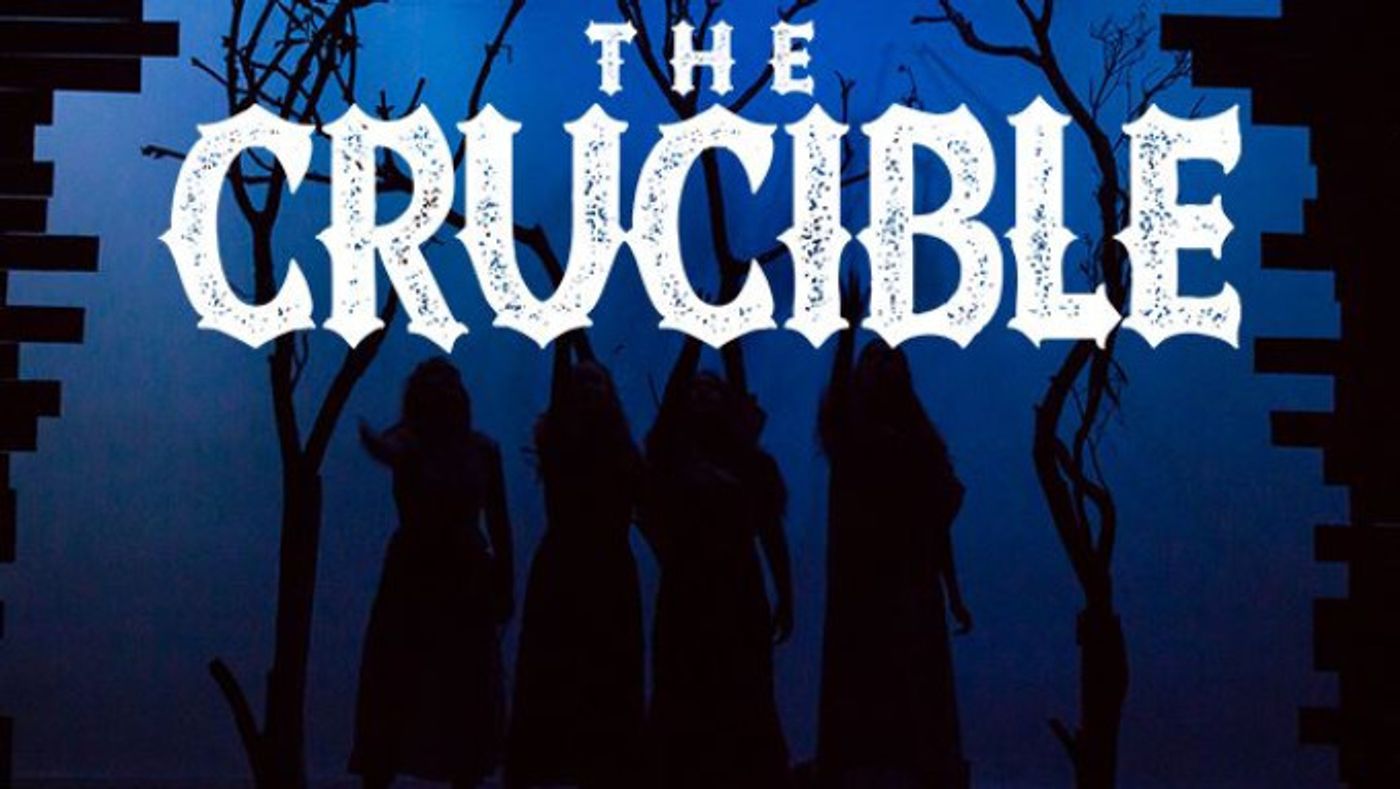Review: THE CRUCIBLE at Brisbane Arts Theatre

The Crucible (1953) is a partially fictionalized narrative of the Salem witch trials which occurred in Massachusetts Bay Colony during 1692 to 1693, written by American playwright Arthur Miller. It is believed Miller's award-winning work is an allegory for McCarthyism, a practice in 1950 America in which government officials conducted a series of investigations and hearings, ostracising people for being communists. Much like his characters, Miller himself was questioned by the House of Representatives' Committee on Un-American Activities in 1956 and convicted of contempt of Congress for having declined to identify other individuals who had been present at the meetings in which he had been in attendance.
Set in Salem, the plot commences with the town minister Reverend Parris's discovery of his daughter and young, wicked niece Abigail Williams dancing in the forest, following rumours of witchcraft spreading through the town, resulting in a nervous crowd gathering at his house. Amongst this crowd is protagonist John Proctor, who the audience quickly learns had an affair with Abigail and is still the object of her desire. Abigail stops at nothing and no-one in her attempt to re-ignite the spark between her and this married man, accusing the townsfolk and friends of witchcraft, igniting deadly storms of paranoia which leads several to the gallows.
Most productions of this piece walk on a tightrope, they're either good or bad, with no in between. Consequently, Brisbane Arts Theatre's artistic director John Boyce made a very bold choice by including this canonical peace it in the company's 2018 mainhouse season, but his decision has paid off.
It's not every day that one is fortunate enough to sit in a theatre and become engrossed in a world in which everyone brings the same energy, authenticity and characterisation on stage; in short 'good acting'. So, you can imagine how I felt watching a show and living in a world in which all the actors, even the individuals who were only a stage for a page or two at most, were their character, and as an active theatre-goer, it was very fulfilling. Hence, as an audience member, I came to understand the disputes, fears and desires of this minute Puritan town and related to Salem's inhabitants not as characters in a play but real individuals who were facing cruel injustice and prejudices.
If I had the space, I would single out everyone in the cast but unfortunately, I don't and will try and fit all of the highlights in the little space I have. There are no words in the English language to truthfully define Reagan Warner's performance as Proctor. Even the words phenomenal and outstanding don't do it justice. From his accent, movements, behaviour relationships with the other characters - he is John Proctor and the audience eats into the palm of his hand. Warner invites the audience to share in and feel his inner torment regarding his affair and his inability to forgive himself. One of the highlights of his performance is when he didn't agree to confess to the court, his death finally returning his integrity and finding him peace for the first time.
Elizabeth Best is the perfect Goody Proctor (a cold, true and virtuous woman who is the moral compass of the play) with her act of letting Proctor has his goodness and not saving her husband from his death being a heartfelt moment leaving the audience searching for the nearest tissue. Other fine performances included Dominic Tennison's portrayal of the unjust and narrow-minded Danforth, Jonathon Devitt's loyal nature of Corey, Greg Scurr's commanding nature of Paros, Leah-Fitzgerald Quinn's fragility of Mary Warren and Claire Argente's portrayal of Abigail not as a selfish brat, but as a misunderstood, heartbroken teenage girl.
But a show isn't a show without its creative team. I lower my hat to Brenda White's seamless direction of this iconic piece and her successful additions to the text, including the spell enchanted dance that the young girls do at the start of the piece. Frances Foo enhances the plot with her costume design which isn't full of colourful sequins nor is it too simple, but authentic costumes which serve as a dimension to each character. George Goldsmid's set design leaves you breathless as you enter the theatre, the inside of a wooden hut, which instead of a back features the exterior of a forest; resulting in witchcraft being ever-present everywhere, from each townsfolk's house to the courtroom. David Willis's lighting design brings another layer of darkness onto the stage, with the silhouettes of the character's being not only very aesthetically pleasing to the audience, but further conveying the darkness that construes each character. I also enjoyed being able to see actor's moving the set pieces and laying the props in the black-outs and how it became a part of the script. Ruby Foster's haunting sound design compliments Willis through harnessing abrupt and harsh sounds to create a constant chilling effect.
The Crucible still holds its bearing in our post-truth world, with countless companies all over the globe creating endless adaptations and fragmenting it into new work. Brenda Miller's company and creative team have shown that it's possible to execute it authentically and still challenge its audience about the essence of humanity. I know I'll be seeing it again.
Where: Brisbane Arts Theatre
When: 7th April - 19th May
Bookings: www.artstheatre.com.au
Reader Reviews

Videos

